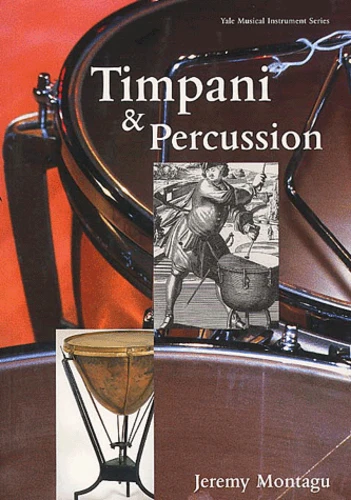Timpani And Percussion
Par :Formats :
- Paiement en ligne :
- Livraison à domicile ou en point Mondial Relay indisponible
- Retrait Click and Collect en magasin gratuit
- Réservation en ligne avec paiement en magasin :
- Indisponible pour réserver et payer en magasin
- Nombre de pages268
- PrésentationBroché
- Poids0.695 kg
- Dimensions17,5 cm × 24,5 cm × 2,0 cm
- ISBN0-300-09500-7
- EAN9780300095005
- Date de parution12/07/2002
- CollectionMusical instrument series
- ÉditeurYale University Press
Résumé
This fascinating book presents the history of percussion instruments from the Old Stone Age to the present day. Jeremy Montagu, a performer, historian, and curator of musical instruments, discusses common and uncommon percussion instruments from all parts of the world, tracing their development
and use through the ages and across cultures.
After exploring the origins and antiquity of percussion instruments, Montagu investigates their appearance in the Middle Ages, in particular the nakers, tabors, cymbals, and triangles that are immediately ancestral
to those we use today. He then describes instruments of the Renaissance and Early Baroque, High Baroque (from which we can trace surviving instruments and specific music), Classical, Romantic and
Modern periods. Montagu follows the development of orchestral and band percussion from the late eighteenth century, moving from the introduction of the 'Turkish music' to the modern pop bands, military, marching and concert bands, and concert and studio orchestras. The book concludes with a
wide-ranging survey of world percussion, covering instruments commonly played in schools, colleges and orchestras. It incorporates appendices' on playing techniques, technical matters, and the sociology of drummers, and is abundantly illustrated with rare images.
This fascinating book presents the history of percussion instruments from the Old Stone Age to the present day. Jeremy Montagu, a performer, historian, and curator of musical instruments, discusses common and uncommon percussion instruments from all parts of the world, tracing their development
and use through the ages and across cultures.
After exploring the origins and antiquity of percussion instruments, Montagu investigates their appearance in the Middle Ages, in particular the nakers, tabors, cymbals, and triangles that are immediately ancestral
to those we use today. He then describes instruments of the Renaissance and Early Baroque, High Baroque (from which we can trace surviving instruments and specific music), Classical, Romantic and
Modern periods. Montagu follows the development of orchestral and band percussion from the late eighteenth century, moving from the introduction of the 'Turkish music' to the modern pop bands, military, marching and concert bands, and concert and studio orchestras. The book concludes with a
wide-ranging survey of world percussion, covering instruments commonly played in schools, colleges and orchestras. It incorporates appendices' on playing techniques, technical matters, and the sociology of drummers, and is abundantly illustrated with rare images.

